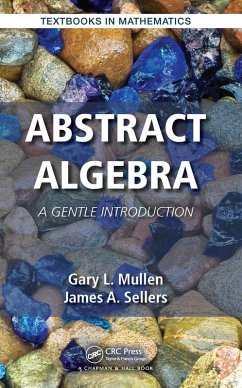This book introduces the basic notions of abstract algebra to sophomores and perhaps even junior mathematics majors who have a relatively weak background with conceptual courses. It introduces the material with many concrete examples and establishes a firm foundation for introducing more abstract mathematical notions.
Dieser Download kann aus rechtlichen Gründen nur mit Rechnungsadresse in A, B, BG, CY, CZ, D, DK, EW, E, FIN, F, GR, HR, H, IRL, I, LT, L, LR, M, NL, PL, P, R, S, SLO, SK ausgeliefert werden.
As the subtitle implies, those seeking a standard undergraduate text in abstract algebra should look elsewhere. The authors provide readers with a very brief introduction to some of the central structures of algebra: groups, rings, fields, and vector spaces. As an example of the textâEUR(TM)s brevity, its treatment of groups consists of definitions, examples, and a discussion of subgroups and cosets that culminates in LaGrangeâEUR(TM)s theorem. There is no mention of group homomorphisms, normal subgroups, or quotient groups. Nonetheless, various applications of the subject not often addressed in traditional texts are treated within this work. It appears that the intent is to provide enough content for readers to comprehend these applications. Just enough elementary number theory is presented to allow a discussion of the RSA cryptosystem. Sufficient material on finite fields is given for a discussion of Latin squares and the Diffie-Hellman public key exchange. Adequate linear algebra topics foster a discussion of Hamming codes. This text will be suitable for an algebra-based course introducing students to abstract mathematical thought or an algebra course with an emphasis on applications.
--D. S. Larson, Gonzaga University, Choice magazine 2016
--D. S. Larson, Gonzaga University, Choice magazine 2016

